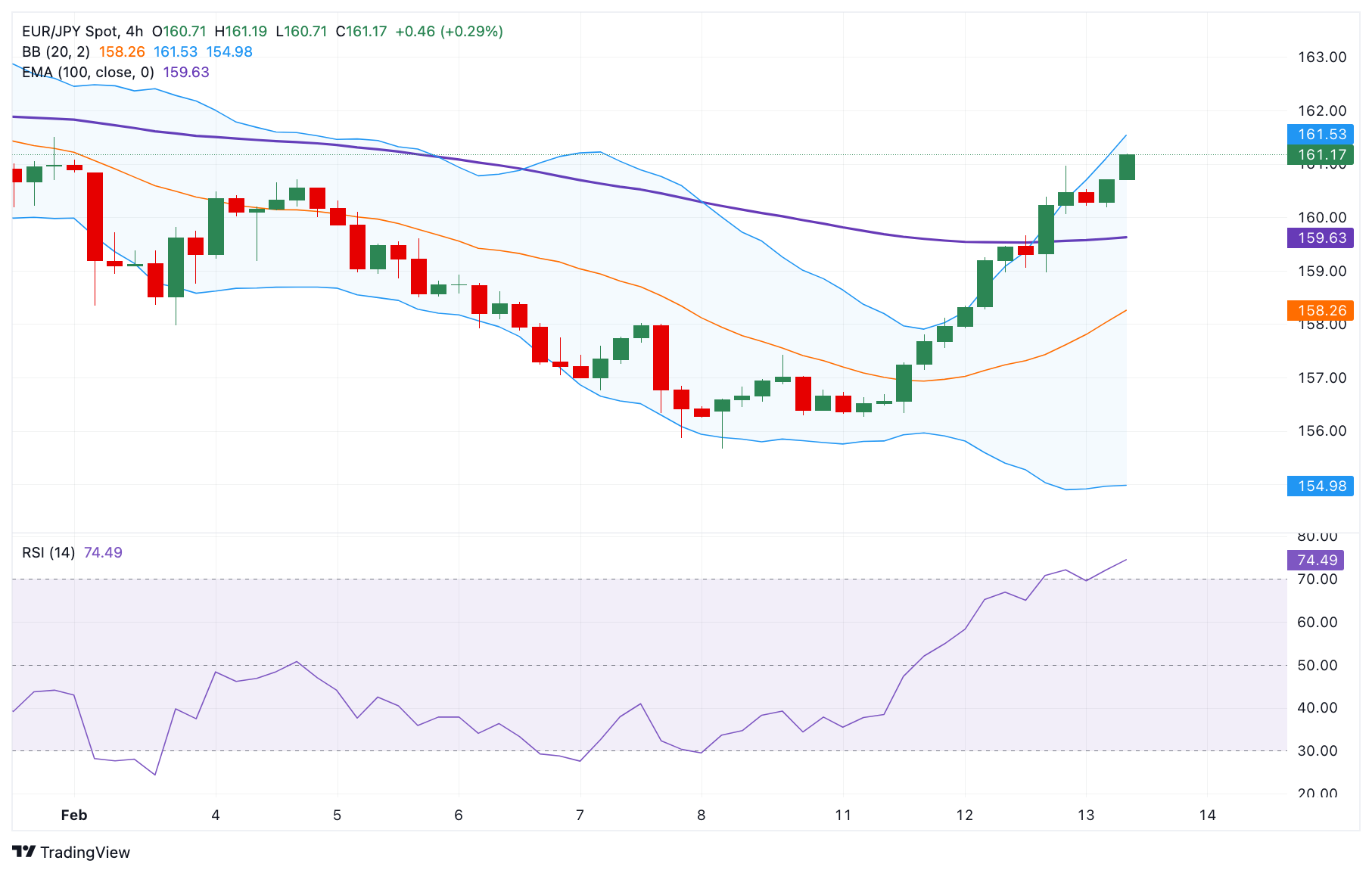EUR/JPY Price Forecast: Extends the rally to near 161.00 amid overbought condition
- EUR/JPY extends its upside around 161.00 in Thursday’s Asian session.
- The positive bias of the cross prevails above the 100-period EMA, but the overbought RSI condition might cap its upside.
- The immediate resistance level emerges at 161.50; the first downside target to watch is 159.62.
The EUR/JPY cross trades in positive territory for the fourth consecutive day near 161.00 during the Asian session on Thursday. The Japanese Yen (JPY) weakens amid the concern that US President Donald Trump's no-exemption taxes on commodity imports could jeopardize Japan's economic recovery.
According to the 4-hour chart, the constructive outlook of EUR/JPY remains intact as the pair holds above the key 100-period Exponential Moving Averages (EMA). However, the 14-day Relative Strength Index (RSI) stands above the midline near 73.35, indicating the overbought RSI condition. This suggests that further consolidation cannot be ruled out before positioning for any near-term EUR/JPY appreciation.
The upper boundary of the Bollinger Band at 161.50 acts as an immediate resistance level for the pair. A decisive break above this level could see a rally to 162.70, the high of January 28, en route to 163.22, the high of January 22.
On the flip side, the initial support level is located at 159.62, the 100-period EMA. A breach of this level could expose 158.00, representing the psychological level and the high of February 7. Further south, the contention level to watch is 156.26, the low of February 11.
EUR/JPY 4-hour chart

Japanese Yen FAQs
The Japanese Yen (JPY) is one of the world’s most traded currencies. Its value is broadly determined by the performance of the Japanese economy, but more specifically by the Bank of Japan’s policy, the differential between Japanese and US bond yields, or risk sentiment among traders, among other factors.
One of the Bank of Japan’s mandates is currency control, so its moves are key for the Yen. The BoJ has directly intervened in currency markets sometimes, generally to lower the value of the Yen, although it refrains from doing it often due to political concerns of its main trading partners. The BoJ ultra-loose monetary policy between 2013 and 2024 caused the Yen to depreciate against its main currency peers due to an increasing policy divergence between the Bank of Japan and other main central banks. More recently, the gradually unwinding of this ultra-loose policy has given some support to the Yen.
Over the last decade, the BoJ’s stance of sticking to ultra-loose monetary policy has led to a widening policy divergence with other central banks, particularly with the US Federal Reserve. This supported a widening of the differential between the 10-year US and Japanese bonds, which favored the US Dollar against the Japanese Yen. The BoJ decision in 2024 to gradually abandon the ultra-loose policy, coupled with interest-rate cuts in other major central banks, is narrowing this differential.
The Japanese Yen is often seen as a safe-haven investment. This means that in times of market stress, investors are more likely to put their money in the Japanese currency due to its supposed reliability and stability. Turbulent times are likely to strengthen the Yen’s value against other currencies seen as more risky to invest in.

